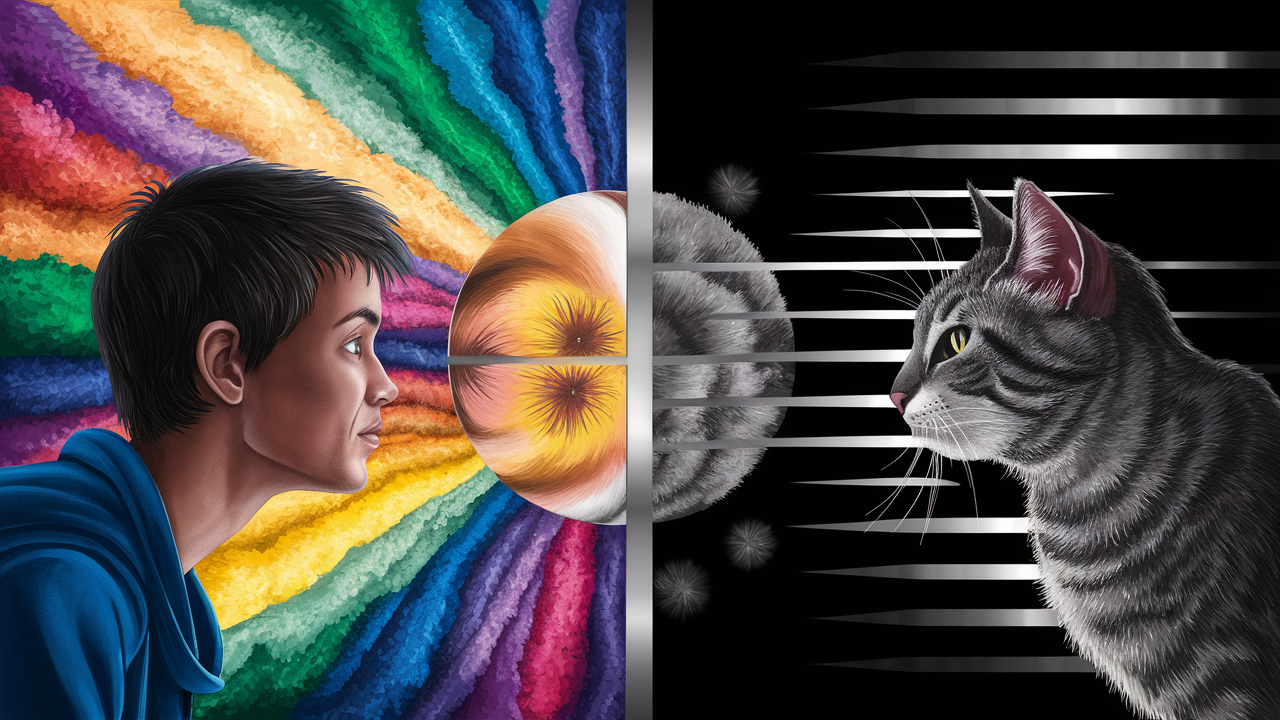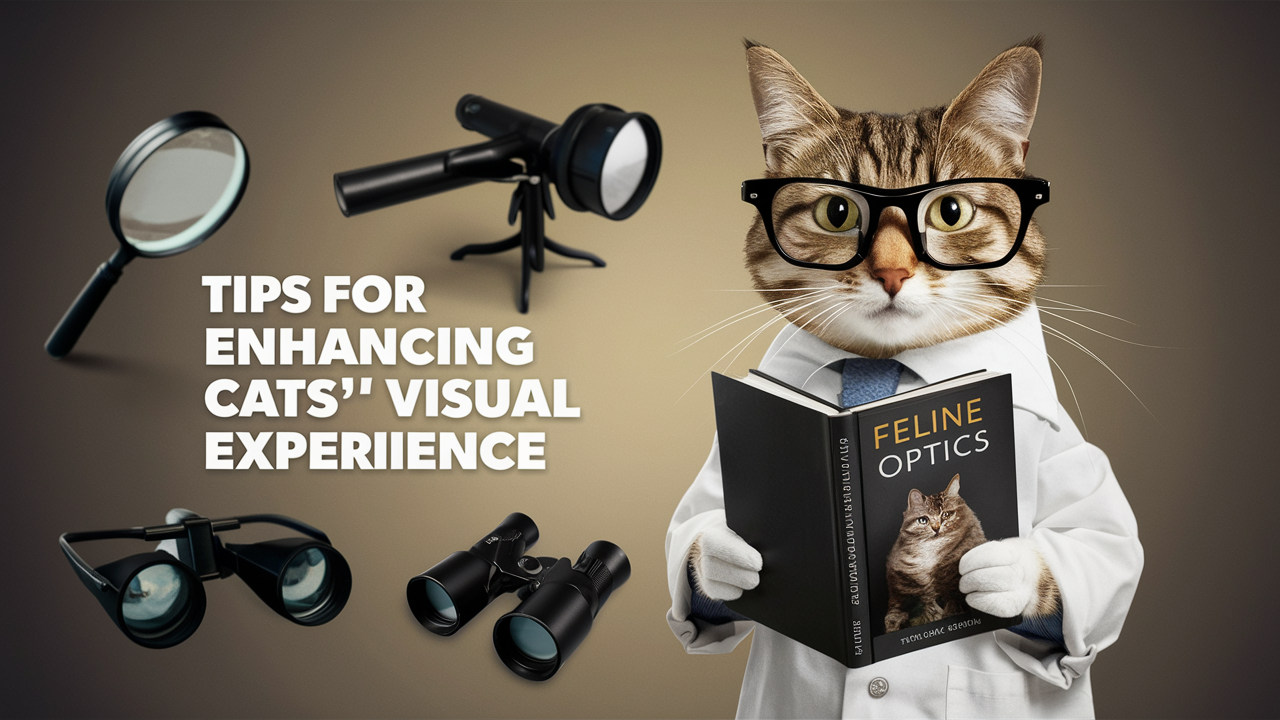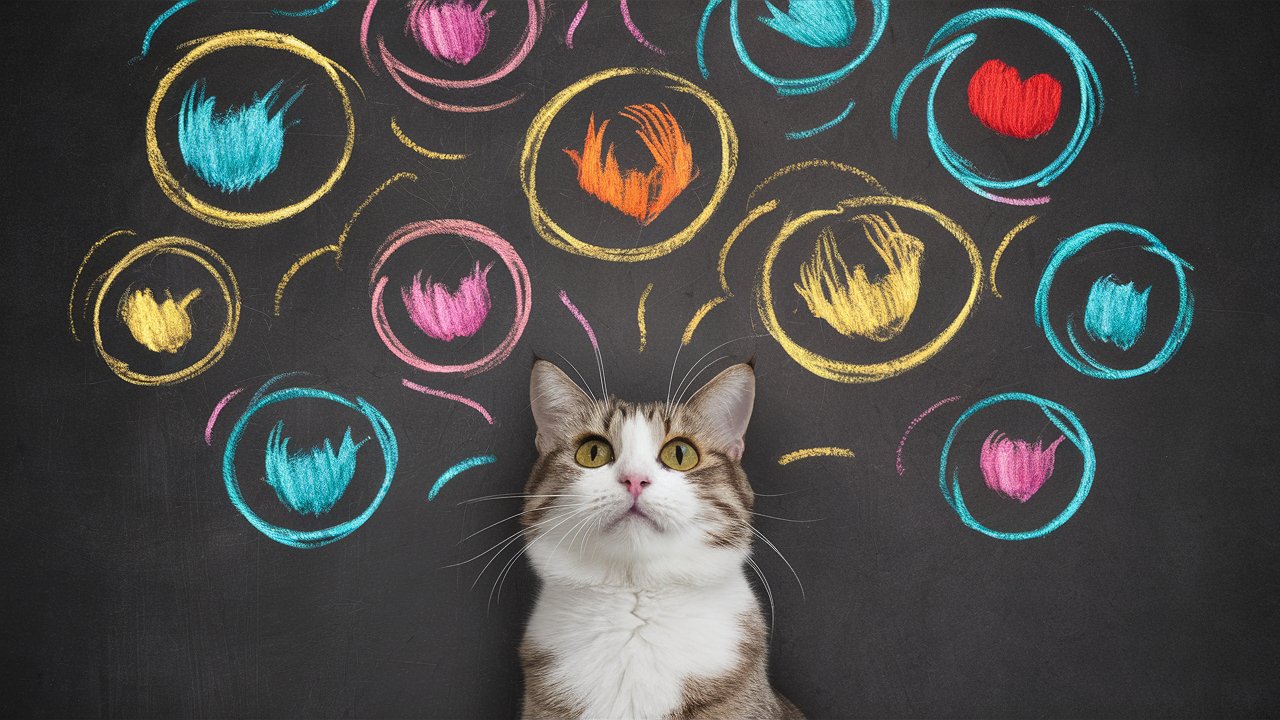What Colors Can Cats See?
“Cats, those enigmatic and graceful creatures, have always fascinated humans with their keen senses and mysterious behaviors. One aspect of feline biology that often piques curiosity is their vision. While it’s commonly known that cats see the world differently from humans, understanding the specifics of their visual perception can shed light on their behavior and preferences. Delve into the feline world of color perception with the question: What Colors Can Cats See?”
Understanding Cat Vision
To comprehend what colors cats can see, it’s essential to delve into the basics of feline vision. Humans, equipped with trichromatic vision featuring three types of color receptors (cones) in their eyes, contrast with cats, which possess dichromatic vision.. This means they have only two types of cones, which limits their color perception compared to humans.
Color Perception in Cats
Due to their dichromatic vision, cats primarily see the world in shades of blue and green. Their capacity to differentiate between red and orange hues is restricted.. This evolutionary adaptation is believed to stem from cats’ natural habitat and hunting behaviors, where detecting motion and contrast are more crucial than discerning fine color details
Interestingly, cats’ color vision is akin to that of individuals with red-green color blindness in humans. While they can’t appreciate the vibrant spectrum of colors as humans do, cats compensate for this limitation with their exceptional night vision and acute motion detection abilities.
Cats’ Preference for Certain Colors
Research indicates that while cats may not perceive colors in the same way humans do, they still exhibit preferences for certain colors. Studies have shown that cats are particularly drawn to colors with high contrast, such as blue and yellow. These colors stand out more prominently against their surroundings, making them more appealing to felines.
Additionally, environmental factors and past experiences may influence a cat’s response to colors. For instance, a cat may associate a particular color with positive experiences, such as receiving treats or attention, leading to a preference for that color.
How Cats’ Color Vision Affects Behavior
The limitations of cat color vision have significant implications for their behavior and interactions with the environment. In the wild, a cat’s ability to accurately perceive motion and contrast is crucial for hunting prey. While they may not rely heavily on color cues, their vision allows them to detect subtle movements, making them formidable predators.
Moreover, colors can also influence a cat’s mood and well-being. Bright, vibrant colors may evoke positive emotions in cats, while dull or muted tones could have a calming effect. Understanding these nuances can help cat owners create enriching environments that cater to their feline companions’ visual preferences.
Comparing Cat and Human Vision

While cats and humans perceive colors differently, there are some similarities in their visual abilities. Both species possess rods and cones in their eyes, albeit in varying proportions, allowing them to see in low light conditions to some extent. However, the differences in color perception highlight the unique adaptations each species has undergone to thrive in their respective environments.
Practical Implications for Cat Owners
For those who care for cats, comprehending the intricacies of feline color vision can guide choices concerning toys, accessories, and environmental enhancement. Opting for toys with contrasting colors and patterns can enhance cats’ visual stimulation and promote engagement. Likewise, selecting bedding and furniture in colors that resonate with cats’ preferences can create a more inviting and comfortable living space for them.
Common Myths About Cat Vision
Despite widespread fascination with cat vision, several myths and misconceptions persist. A prevalent misconception is that cats perceive the world solely in shades of black and white. While their color perception is limited compared to humans, cats are not devoid of color vision altogether. Another misconception is that cats are attracted to red objects. In reality, cats may not perceive red as vividly as other colors due to their dichromatic vision.
Tips for Enhancing Cats’ Visual Experience

To optimize cats’ visual experience, consider incorporating the following tips:
Provide toys with contrasting colors and textures to stimulate visual and tactile senses.
Place perches and climbing structures near windows to offer panoramic views of the surroundings.
Use interactive toys that mimic prey movements to engage cats’ hunting instincts.
Incorporate visual enrichment activities, such as puzzle feeders and treat dispensers, to encourage mental stimulation.
Conclusion
In conclusion, while cats may not perceive the world in the same kaleidoscope of colors as humans, their unique vision offers fascinating insights into their behavior and preferences. By understanding the nuances of cat color vision, cat owners can create environments that cater to their feline companions’ sensory needs, enriching their lives and strengthening the bond between humans and cats.
FAQs
Can cats see in complete darkness?
Although cats possess exceptional night vision capabilities, they are unable to see in complete darkness.
Do cats see in black and white?
In contrast to common belief, cats do not view the world in black and white. They perceive the world in shades of blue and green, with limited ability to distinguish between red and orange hues.
Are certain colors harmful to cats’ eyes?
There is no evidence to suggest that specific colors are harmful to cats’ eyes. However, excessively bright or flashing lights may cause discomfort or irritation to sensitive feline eyes.
Do cats prefer certain colors over others?
Cats may exhibit preferences for certain colors, particularly those with high contrast, such as blue and yellow. However, individual preferences can vary based on factors such as past experiences and environmental stimuli.
Can cats see colors on television screens?
Cats may perceive movement and flickering images on television screens, but their ability to discern colors is limited. They are more likely to be intrigued by the motion rather than the colors displayed on the screen.
